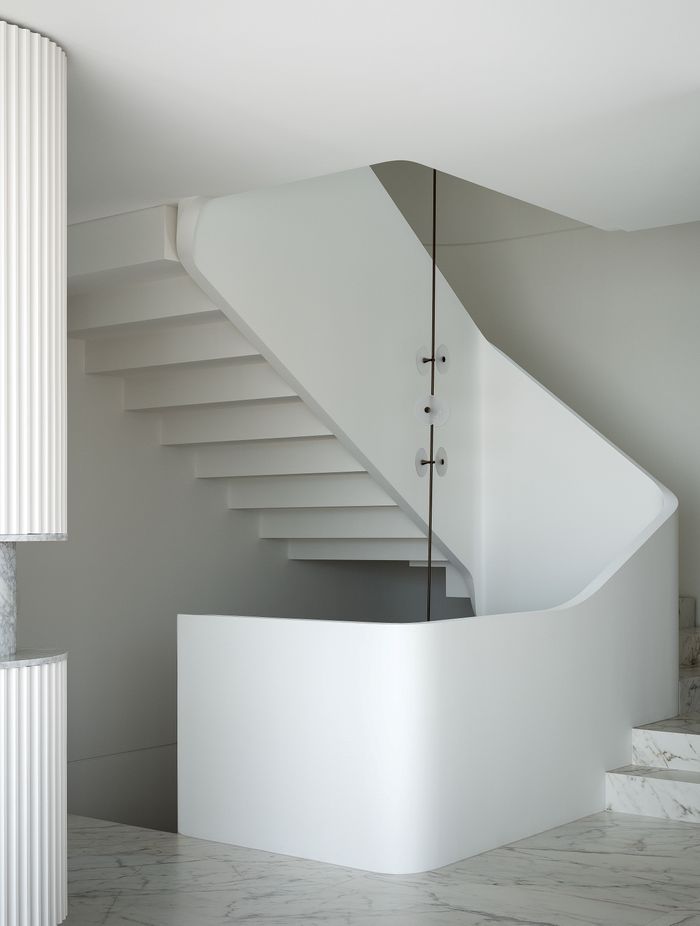Learning curve: understanding the allure of spiral staircases
Written by
11 August 2022
•
4 min read

Spiral staircases are one of the world’s oldest architectural features. The earliest spiral staircase still standing today is Trajan’s Column, a monument erected in Rome to honour a great emperor in 113AD. Historical accounts also indicate that spiral staircases were used in medieval castles as a deterrent to armed intruders, the narrow quarters requiring a single-file offensive that made wielding weapons cumbersome. The curvaceous ascent was soon built into cathedrals and monasteries, but the grand quality of spiral staircases eventually came to be associated with royalty and wealthy nobility. Naturally, the presence of such a structural feature became desirable in homes and residences.

Return to fame
Today, we’re seeing a revival of the spiral staircase and the reason for its resurgence is twofold. The curling steps have been reinterpreted into modern art forms, the sculptural architecture of which has been ushered into homes of various styles with equal success. Elegant and majestic, the spiral staircase is once again linked to affluence and taste, its appearance in a residential setting replacing art or complex design features to add depth and interest.

The second driver behind the popularity of spiral staircases is their sheer practicality. Depending upon the style of stairs you choose, they can be both affordable and easy to install, and are thought to add value to a home when done well. However, the grander the staircase, the greater the spatial and financial investment required.

Types of spiral staircases
Concrete, stone, timber, glass and bare-bones steel have all been used to construct spiral staircases. An open or closed design is available; the former recedes into your interior architecture with the walls closed in around it, the latter is open and requires an independent framework – a style often associated with wrought iron and steel staircases seen in libraries of yore. A stark and tight spiral works best in compact spaces, while an opulent stylised version is at home in spacious quarters.

Current trends
Contemporary interior design favours a minimalist rendered aesthetic that fuses seamlessly with the interior architecture of the home, or a tactile material that presents a smooth and united façade to your space. Regardless of the material, the preferred shape is loosely coiled and gracefully flows from upper to lower floors.

Design features
Whether whimsical and romantic, industrial or mid-century, country or contemporary, a successful staircase design comes down to its composition. An entire staircase made of one material is a no-no, rather, a combination of two to three materials is best. Pair a lime wash render with marble steps or a graphic powder-coated balustrade in black. Timber and concrete offer a juxtaposition of hard and cool against warm and soft that’s pleasant to the eye, while glass is agreeable with both timber and steel.

Colour matters
One rule that’s integral to note is that no staircase should be dressed entirely in dark hues. A light, bright and airy white or greyscale colourway is best suited to spiral staircases as it mitigates the inherent heaviness of its structure. The exception to this rule is those with open framework.

Defying gravity
Contemporary homes and new builds currently opt for the gravity-defying cantilevered or ‘floating’ staircases, the key consideration of which is ensuring your staircase can be supported by the foundational structure of your building. In order to maximise the impact of such a spiral staircase, you must embrace the idea of negative space and leave its surroundings bare of art, furniture and clutter.

Timeless appeal
Whatever the style of your home, the spiral staircase has proven to be an architectural inclusion that withstands the test of time. Spiral stairs are versatile and customisable structures that lend themselves to any aesthetic and can be adapted to suit any space or budget – the only limit is your imagination.
Looking for more style advice? Read our guide to decorating with colour or investing in designer furniture on ArchiPro.